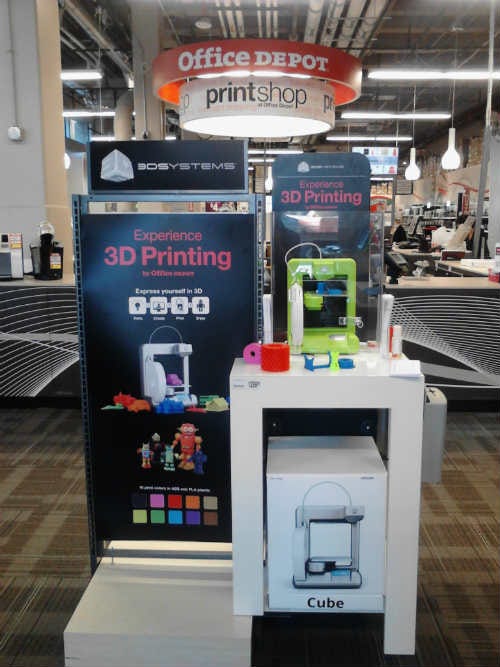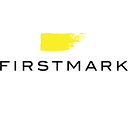When Will Consumer 3D Printing Become Common? — Hear From Four 3D Printing Founders
If you’re interested in 3D printing, don’t miss the FirstMark Hardwired series, a monthly event in New York covering the intersection of hardware and software, including Internet of Things, 3D printing, robotics, and virtual reality. With more than 4,000 members, Hardwired surfaces the stories behind some of the most interesting companies in the world.

With all the hype surrounding the industry a few years ago, consumer 3D printers felt like machines all of us would use in our near future. Fast forward a few years, and consumer 3D printers have yet to go mainstream, despite retail placement among mundane inkjets and flatbed scanners at your local Office Depot.
We’re not yet printing parts on a Saturday morning to fix a wobbly cabinet door and there’s some thought in the 3D printing community that perhaps we never will.
Curious about the current state of 3D printing hype, we spoke with four founders with deep experience in the 3D printing space. In particular, we wanted their opinion on when at-home consumer 3D printers become the norm, if ever.
Kegan Schouwenberg, CEO, SOLS
Kegan Schouwenberg has years of experience in the industrial design and mass-manufacturing space. She was previously the director of engineering and operations at Shapeways, where she helmed one the world’s largest 3D printing factories.
With all that experience in the industry, Schouwenberg has never owned a 3D printer. In an interview at FirstMark’s Hardwired NYC, Schouwenberg shared why she believes we’re decades away from 3D printers being commonplace.
“The first question is what I would actually make,” Schouwenberg said. “I only have one 3D printed part in my home — a small record holder. It’s the only thing I’ve made in the context of 10 years that’s integrated in the home.”
Schouwenberg believes there’s more momentum around 3D printing at the large-scale manufacturing layer, not for small objects around the house.
“I don’t know if we ever get to that point,” she said, of a world where at-home 3D printers are common.
She sees a greater likelihood that companies like SOLS will operate large factories overseas where certain components of the product are 3D printed. “That looks like a much more realistic trajectory until we have the replicator 20 years out in the future where things just magically come into existence,” she said.
See our interview with Schouwenberg at Hardwired NYC below.
SOLS redefines and redesigns movement, pioneering mass customization via 3D printed orthotics. The software platform connects the dots between hardware agnostic scanning, generative design, and digital manufacturing to make custom mass manufacturing a reality. By enabling people to have easy access to relevant, far reaching, and custom fit products, they are striving to bring the world of 3D printing to the mass consumer sector.
Bram de Zwart, CEO, 3D Hubs — Response submitted by email

I don’t have a 3D printer at home, but I do have a dozen in the office that I can play with and I did print many objects which are now in my home (light shades, the cake topper from my wedding last year, soap dish, nameplate at front door, etc.).
I think in the next few years many people will get a 3D printer in the home, especially for children to design and make their own toys. Mattel also just released a $300 3D printer.
But I also believe that for now the majority of the money in 3D printing (a $5B market) will continued to be made on the professional/industrial level on machines that can easily cost $500,000. Companies such as Airbus and Invisalign are using these types of 3D printers on a large scale to manufacture end-parts.
3D Hubs is world’s largest and fastest growing network of 3D printers. By connecting everyone to nearby 3D printer owners, 3D Hubs is accelerating a future of local and on-demand production. Its network consists of 28,000 printing locations worldwide, providing over one billion people access to a 3D printer within 10 miles of their home.
Tom Bielecki, Founder & CEO, PrintToPeer — Response submitted by email

Whereas industrial 3D printing has reached a growing and mature state with an exciting ecosystem of players and applications, the consumer market is volatile and is not near mass adoption. Consumer is definitely heading into the trough of disillusionment. Unfortunately, the hype for mass consumer adoption has had a negative impact for industrial OEMs, but I’m bullish on the industrial fundamentals (in fact Additive Manufacturing is now a discipline of its own in many universities, under mechanical engineering).
For consumer machines, expectations have been inflated compared to the complex issues inherent in the fabrication process and control. The hardware has become so commoditized that valuable sensors are being stripped out, and these consumer machines seem to be competing purely on marketing and distribution. Unfortunately the volatility means that subsidizing upfront costs doesn’t guarantee a long-term competitive advantage. The only mass market potential in the near term is in education. Mattel may get some traction, but I’ll reserve my outlook until reviews come in. FDM (fused deposition modeling) machines will remain a hobby tool for drones, tinkering, cosplay, etc. SLA (stereolithography) machines will not take off for the home, and food 3D printers are still largely a pipe dream.
These mismatched expectations plus the complexity of the build process will also confuse the value proposition of prosumer and professional desktop 3D printers.
The PrintToPeer remote management platform is a web-based dashboard that makes it easy to control your 3D printer from anywhere in the world, including queueing, starting and monitoring prints, and keeping track of your printer’s health. It is secure, mobile-friendly, and easy to use, with all of the information and controls that you need to manage and operate a 3D printer.
Jonathan Schwartz, Co-Founder & CPO, Voodoo Manufacturing

Technology isn’t worth anything by itself. It’s not about the computer, it’s what the computer can do. For 3D printers, it’s about the objects they will make.
So, we have to wonder about the killer app for 3D printing. A lot of people say prototyping, and they have said that since the 80s. You can crank out prototypes over night.
But, consumers really aren’t interested in making fully formed products. Most aren’t even capable.
The thought experiment I’ve always come back to is having a 3D printer at home the size of an oven that can print objects the size of an oven. All you have to pay for is raw material. What are you going to make? Consider that Amazon can probably deliver what you need the same day.
We don’t need people trying to redesign a water glass. We need people trying to create new products that are better. Invisalign, for instance, was not possible before 3D printing.
That said, I’ve had a 3D printer in my home for 4 years. And I will never go without it. There are probably another 200,000 in the U.S. like me.
But, it will be interesting to watch adoption of the Mattel ThingMaker. It seems like a hit to me. It will be awesome for kids to build toys from scratch. I think it could inspire a generation of makers.
Voodoo Manufacturing uses low-end 3D printing technology to provide fast, affordable, and high-volume 3D printing. Voodoo Manufacturing handles prototyping and design as well as bulk production of 3D printed parts. Voodoo is designing the software-driven factory of the future.
3D Printer Sales
Even with some pessimism from our panel about consumer 3D printers, overall sales of 3D printers are growing quickly. According to the technology research and advisory firm Gartner, worldwide 3D printer shipments are expected to exceed 496,475 units by the end of 2016. That is an increase of 103% over 2015. In fact, Gartner expects 3D printer sales to more than double every year until 2019 when they predict worldwide shipments will climb to more than 5.6 million units.
To join the Hardwired NYC community, sign up here. And, to see the full collection of previous speakers at Hardwired, visit our YouTube channel here.
